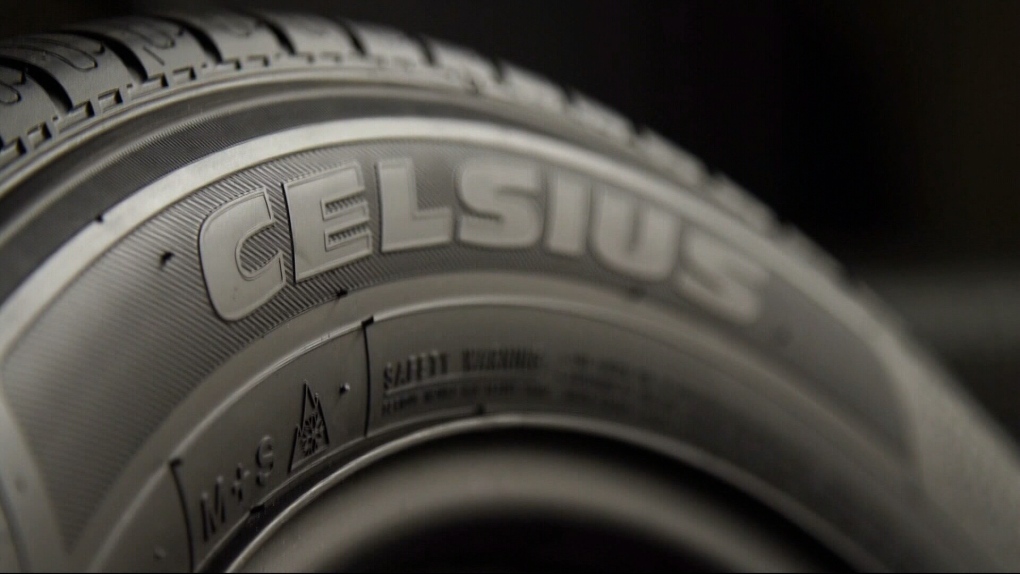Albertans know winter tires are important, poll shows only 56% use them
 A winter tire is your best bet in snow and cold temperatures.
A winter tire is your best bet in snow and cold temperatures.
Alberta has already seen its fair share of snowy weather to start the month, but a new poll suggests that many drivers are still not using winter tires on their vehicles.
The survey, conducted by Leger for the Tire and Rubber Association of Canada (TRAC), found that just 56 per cent of Alberta drivers use them, slightly below the national average of 63 per cent.
More Alberta drivers are using winter tires than those in Manitoba (54 per cent), but 74 per cent of drivers in Atlantic Canada have them installed.
TRAC's survey says of those Alberta driver who do use winter tires, many have witnessed the benefits first-hand.
"Seventy-four per cent of Alberta motorists with winter tires say their tires have saved them from loss of control or a collision," TRAC said. "But the fact that 43 per cent of the province's drivers do not use winter tires threatens everyone using wintertime roadways."
TRAC recommends all Canadian drivers use winter tires that possess a Three-Peak Mountain Snowflake Symbol (3PMS), which is an indicator that they "meet or exceed" policy standards on snow traction.
"Drivers have three choices for winter driving: all-season tires; all-season tires with the 3PMS symbol and dedicated winter tires designed exclusively for winter. Selecting the right tire can mean the difference between a surefooted winter motoring experience and a nervous drive," TRAC said.

The survey results were compiled from data collected outside Quebec, where winter tires are required by law.
Many of the same factors – cost, different driving habits and belief that all-seasons are "good enough" – were prominent in this year's report, but TRAC says more drivers nationwide are using them.
A 2017 survey found only 60 per cent of drivers outside Quebec use winter tires.
A survey of 1,607 Canadian drivers was completed online between Oct. 21 and 30, using Leger’s online panel. A probability sample of the same size would yield a margin of error of +/-2.4 per cent, 19 times out of 20.
CTVNews.ca Top Stories

Alleged gang member driving from U.S. arrested at Canadian border after making wrong turn
An alleged gang member coming from the United States was arrested at the Canadian border after reportedly making a wrong turn onto the Peace Bridge border crossing.
Negotiations between Canada Post, union still on hold
Canada Post says it's waiting for a response from the union representing some 55,000 striking workers after it offered a new framework for negotiations over the weekend.
Trump demands immediate release of Oct. 7 hostages, says otherwise there will be 'HELL TO PAY'
President-elect Donald Trump is demanding the immediate release of the Israeli hostages still being held in Gaza, saying that if they are not freed before he is sworn into office there will be “HELL TO PAY."
Kingston, Ont. doctor ordered to repay $600K for pandemic vaccination payments
An Ontario health tribunal has ordered a Kingston, Ont. doctor to repay over $600,000 to the Ontario government for improperly billing thousands of COVID-19 vaccinations at the height of the pandemic.
Nova Scotia lawyer suspended following ugly courtroom fracas
A Nova Scotia lawyer who had to be restrained by deputy sheriffs during a court appearance earlier this year has lost his appeal of a suspension following the bizarre incident.
Harvey Weinstein hospitalized after 'alarming blood test,' attorney says
Harvey Weinstein was hospitalized Monday following an 'alarming blood test,' his attorney said, less than a week after he filed a legal claim alleging substandard medical care at New York City's notorious jail complex.
AC/DC announces North American stadium tour, Vancouver lone Canadian stop
Big news for AC/DC fans as the heavy metal bigwigs announced Monday they will hit the road next spring. But as of now, there’s only one Canadian show on the docket.
Wind chills of -50, snowfall of up to 50 cm: Canada's weather forecast
As the second day of December unfolds, Canadians from coast to coast are experiencing a range of wintry conditions. Here's what's happening in different parts of the country.
After multiple data breaches, Yahoo settled a class-action lawsuit. The deadline to file compensation claims is approaching
Yahoo and Rogers customers in Canada have until the end of the month to claim up to $375 cash from a data breach settlement.































